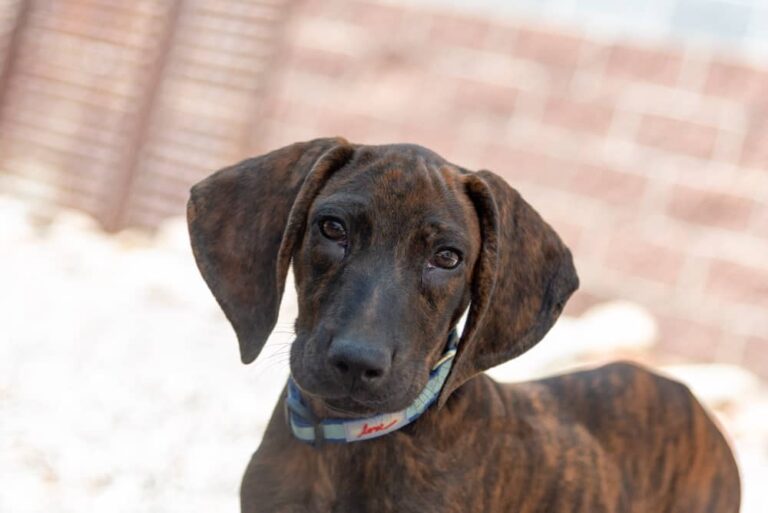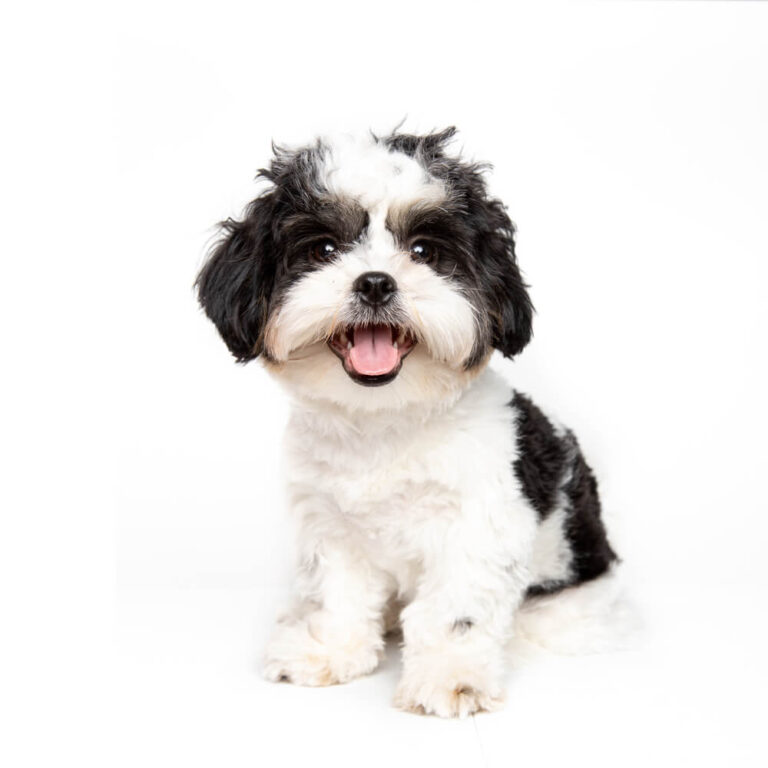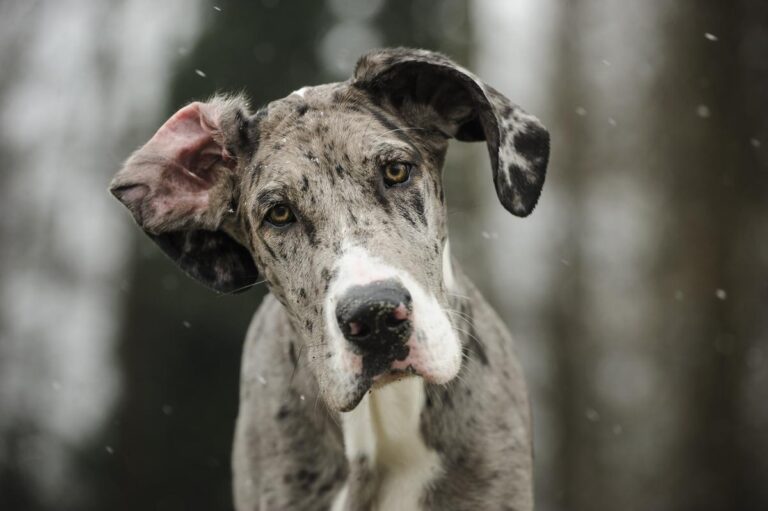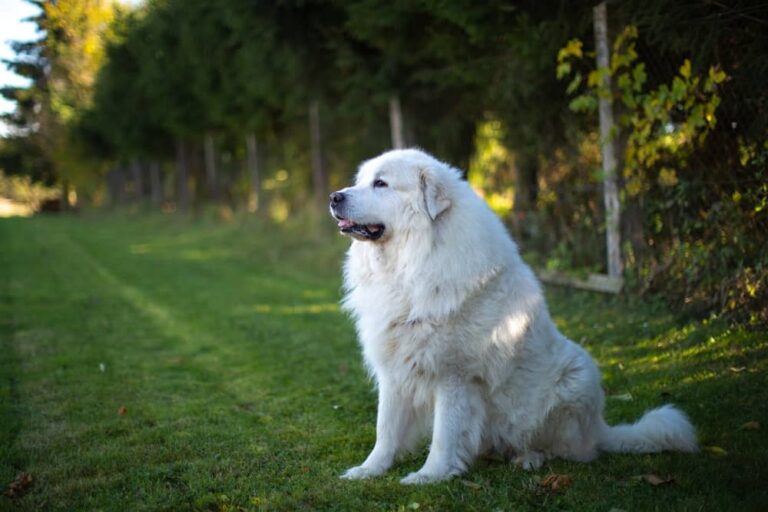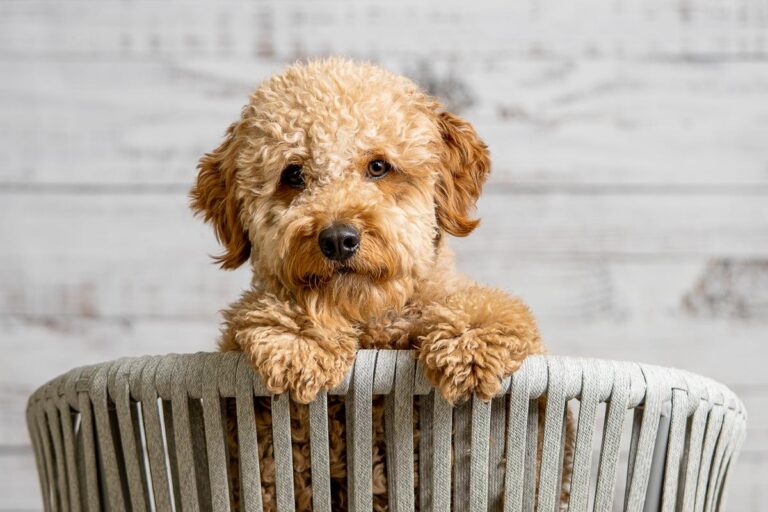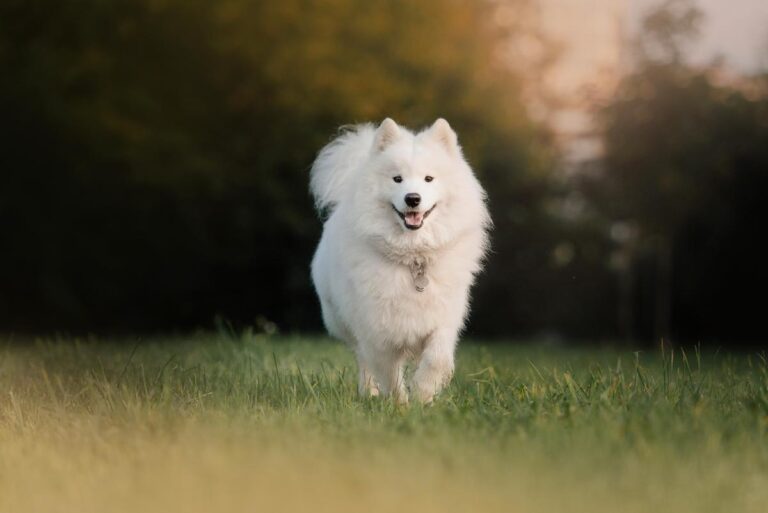Great Dane Corgi Mix – Ultimate Guide
The Great Dane Corgi Mix cross is one of the most popular dog crossbreeds in the world, winning the hearts of dog lovers everywhere.
The Corgi-Dane quickly became a cherished and desired companion for families all over the world due to its adorable appearance, loving nature, and fascinating combination of features.
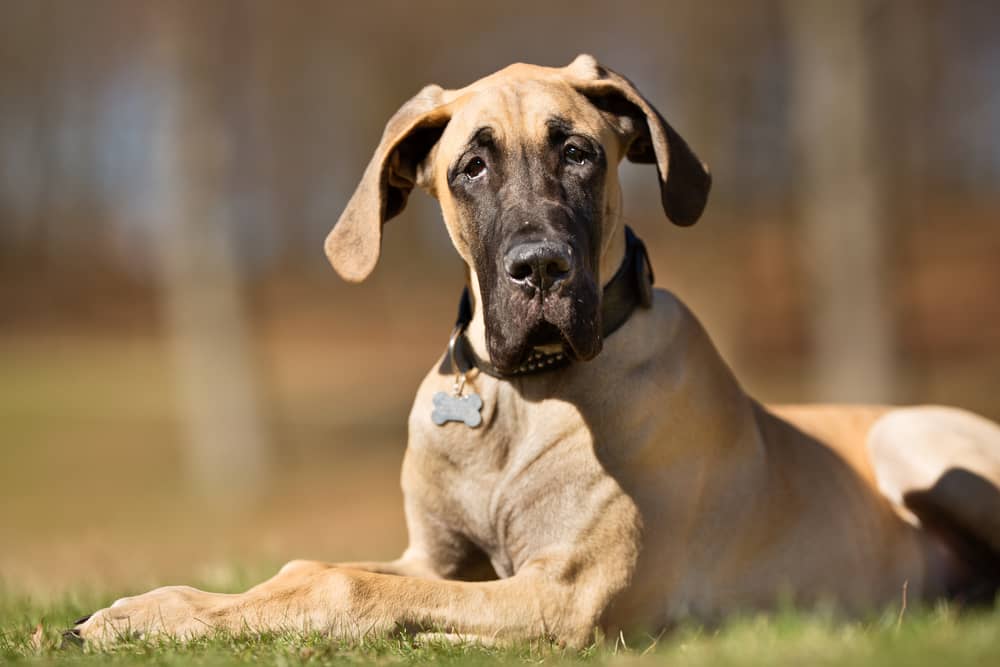
At first glance, it would seem like a strange combination to mix a diminutive Corgi with a regal Great Dane.
Great Danes are recognized for their tall stature and kind attitude, whereas Corgis are well known for their short legs and long bodies.
Corgis are also well known for their lively personality and herding abilities.
The outcome is a dog that boasts the best of both worlds, but this unusual mix has proven to be a successful one.
Also Read: Red Golden Retriever Puppies – Ultimate Guide
Additionally, the Corgi-Dane’s flexibility and versatility have drawn the attention of both dog specialists and lovers.
This mixed breed is renowned for its ability to adapt to many living situations, whether it be a compact apartment or a large family house.
Their friendly nature guarantees they fit in well with families with children or other pets, and their moderate exercise requirements make them acceptable for people with varied levels of activity.
This article delves into the Corgi-Dane breed, covering its history, appearance, health concern, grooming tips and the reasons why you should have a corgi and great dane mix and why you should not adopt this breed.
The Great Dane’s History
The Great Dane is a German-bred dog, despite their misleading name. Although it is difficult to pinpoint its exact origin, researchers estimate that the Great Dane has existed for at least 400 years.
They were originally bred as guardians of the German nobility’s estates and carriages and descended from Mastiff-type canines.
The Corgi’s History
The Pembroke Welsh Corgi has a long history dating back to 1107 AD, during the early days of Britain.
Originally from what is now Belgium, Flemish weavers brought the Pembroke Welsh Corgi to Wales where they were used as companion and cattle-herding dogs.
Corgis are often used in competitions in the contemporary age and are surprisingly quick, attaining speeds of up to 25 MPH.
The Pembroke Welsh Corgi Club of America was established in 1936, sometime after they were first introduced to the US.
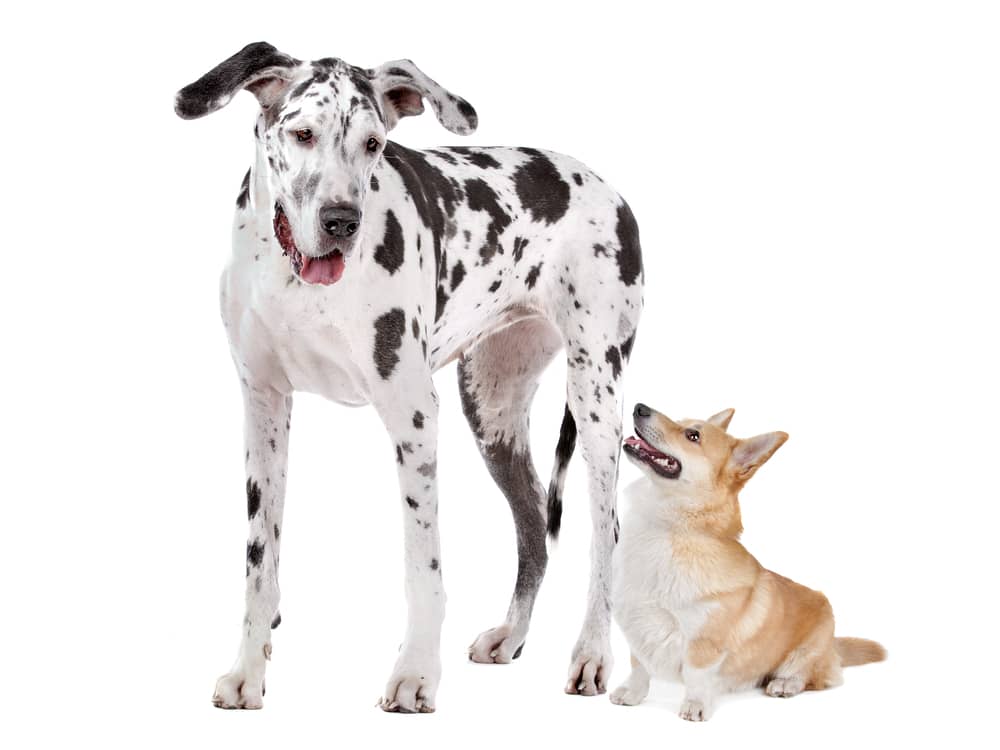
An Overview of Great Dane Corgi Mix Characteristics Table
| Characteristics | Corgi Great Dane Mix |
|---|---|
| Size | Varied (influenced by parentage) |
| Height | Range from medium to tall |
| Weight | Varies widely |
| Body structure | May have a mix of short legs and long body |
| Coat | Short to medium length, vary in texture |
| Colors | Wide range of colors and patterns |
| Temperament | Playful, intelligent, affectionate, calm |
| Energy level | Moderate |
| Trainability | Generally trainable and eager to please |
| Socialization | Usually good with children and other pets |
| Exercise needs | Regular exercise is required for physical health |
| Grooming needs | Low to moderate |
Arm & Hammer Fruit Twisters Fresh Breath Dental Treats for Dogs in Fruity Strawberry Flavor Baking Soda Dog Treats for Dental Health
Nutrition Food Requirement for Dogs
Food and Dietary Requirements
- Banana: Dogs can enjoy the natural sweetness and health benefits of bananas in moderation.
- Asparagus: A nutritious veggie that can be a crunchy and tasty treat for your furry friend.
- Strawberry: Rich in vitamins, strawberries make a delightful occasional snack for dogs.
- Orange Chicken: Plain cooked chicken without spices or sauces can be a safe protein source for dogs.
- Almond Butter: Avoid almonds, but dogs can indulge in unsalted and unsweetened almond butter as an occasional treat.
- Quesadilla: Plain tortilla with a small amount of cheese can be a simple treat for dogs.
- Pita Bread: A small piece of plain pita bread can be given as an occasional snack.
- Ricotta Cheese: Dogs may enjoy a little ricotta cheese as an occasional treat, but avoid excessive amounts.
- Provolone Cheese: Offer a tiny piece of provolone cheese as a special reward for your furry companion.
- Banana Pudding: Plain banana pudding without additives or artificial sweeteners can be an occasional treat.
- Watermelon: A refreshing and hydrating fruit that dogs can enjoy in small, seedless portions.
- Coffee Chew Wood: Coffee and any type of wood should be kept away from dogs, as they are harmful.
- Oatmeal Cream Pie: Avoid sugary snacks like oatmeal cream pies, as they are not suitable for dogs.
- Teriyaki Sauce: Skip the teriyaki sauce, as the high sodium content is unhealthy for dogs.
- Mushroom Cream Soup: Keep creamy soups, especially those with mushrooms, away from your furry friend.
Nutritional Values of these Foods
Vitamins and Nutritional Pros and Cons
- Banana:
- Vitamin B6:
- Pros: Supports metabolism, immune system, and red blood cell production.
- Cons: Overconsumption may cause gastrointestinal upset due to high fiber content.
- Vitamin C:
- Pros: Acts as an antioxidant, boosts the immune system, and promotes healthy skin.
- Cons: Dogs produce their own vitamin C, so supplementation is usually unnecessary.
- Vitamin B6:
- Asparagus:
- Vitamin A:
- Pros: Essential for vision, immune function, and cell growth.
- Cons: High-fiber content may lead to stomach upset if given in large quantities.
- Vitamin C:
- Pros: Supports the immune system and helps absorb iron.
- Cons: Overfeeding may lead to gas or mild digestive issues.
- Vitamin A:
- Strawberry:
- Vitamin C:
- Pros: Provides a boost to the immune system and has antioxidant properties.
- Cons: Should be given in moderation due to natural sugars.
- Vitamin C:
- Orange Chicken:
- Vitamin B6:
- Pros: Supports metabolism and brain health.
- Cons: Avoid giving chicken with spices or sauces, which can be harmful.
- Vitamin B6:
- Almond Butter:
- Vitamin E:
- Pros: Protects cells from damage and promotes healthy skin and coat.
- Cons: Almonds themselves can be a choking hazard, so avoid direct consumption.
- Vitamin E:
- Quesadilla:
- Vitamin B6:
- Pros: Supports energy metabolism and nervous system function.
- Cons: High-fat content in cheese may lead to weight gain if given excessively.
- Vitamin B6:
- Pita Bread:
- Various B Vitamins:
- Pros: Essential for energy metabolism and nerve function.
- Cons: Pita bread can be high in carbohydrates, so feed in moderation.
- Various B Vitamins:
- Ricotta Cheese:
- Vitamin A:
- Pros: Important for vision and immune system support.
- Cons: High-fat content, so feed in small amounts to avoid weight gain.
- Vitamin B12:
- Pros: Supports nerve function and red blood cell production.
- Cons: Excessive consumption may lead to gastrointestinal upset.
- Vitamin D:
- Pros: Aids calcium absorption and supports bone health.
- Cons: Over-supplementation can lead to toxicity, as dogs can’t regulate vitamin D as effectively as humans.
- Vitamin K:
- Pros: Crucial for blood clotting and bone health.
- Cons: Excessive vitamin K can interfere with blood-thinning medications.
- Calcium:
- Pros: Essential for bone and teeth health, muscle function, and nerve transmission.
- Cons: Over-supplementation can lead to skeletal problems and urinary issues.
- Vitamin A:
- Provolone Cheese:
- Vitamin A, Vitamin B12, Vitamin K, Calcium:
- Pros: Similar to ricotta cheese, these vitamins and minerals offer various health benefits.
- Cons: High-fat and sodium content, so feed in moderation to avoid health issues.
- Vitamin A, Vitamin B12, Vitamin K, Calcium:
- Banana Pudding:
- Vitamin B6:
- Pros: Supports metabolism and various body functions.
- Cons: Pudding may contain added sugars and artificial ingredients, which are not suitable for dogs.
- Vitamin B6:
- Watermelon:
- Vitamin A, Vitamin B6, Vitamin C:
- Pros: Provide essential vitamins and hydration.
- Cons: Remove seeds and feed seedless watermelon in small portions to prevent choking.
- Vitamin A, Vitamin B6, Vitamin C:
Reasons why you shouldn’t get a Great Dane Corgi Mix
● This Corgi Great Dane Mix requires a lot of Play space:
The corgi great dane mix both like being active outside and require regular play and exercise.
Although a Corgi can live happily in a small house or apartment thanks to the genes of the enormous Great Dane, you will need to offer a sizable yard for your dog to play in.
As much as feasible, you need to have access to a big yard, a nearby dog park, or a playground.
This is not the dog for you if you don’t have space or easy access to these resources close to your home.
Also Read: Big Muscular Pitbull Tips
● This Corgi Great Dane Mix Must Interact with Other Animals And People
To be able to develop a well-rounded home manner, the corgi great dane mix breed dog should have pet siblings or at the very least be let to play with other dogs.
Additionally, it will stop unpleasant and unsociable behaviour. You will have to settle with another breed or mixed breed if this is not possible.
● Need to Exercise Regularly
You won’t be able to care for a Corgi/Great Dane hybrid if you live in an apartment or a small house.
Even indoors, this mixed breed needs a lot of areas to play and run around. This dog may become difficult to train and may exhibit behavioural issues if kept in a small apartment.
List of other reason for not considering Corgi Great Dane Mix
- Size and Space: Dorgis can vary in size, and if you live in a small space, their size may be impractical. Great Danes are large dogs, and the mix can be quite substantial, requiring ample room to move comfortably.
- Exercise Needs: Dorgis need regular exercise to stay healthy and prevent obesity. If you’re unable to commit to daily walks and playtime, this breed may not be suitable.
- Grooming Requirements: While their coat is generally low-maintenance, they do shed moderately, and regular brushing is needed. If you have allergies or a preference for a low-shedding breed, a Dorgi might not be the best choice.
- Health Concerns: Both Corgis and Great Danes have specific health issues, and their mix may inherit some of these genetic predispositions. This can lead to potential veterinary expenses and health concerns.
- Training Commitment: Dorgis are intelligent but can also be independent-minded. They require consistent and positive reinforcement training. If you don’t have the time or patience for training, it may not be the right breed for you.
- Socialization Needs: Early socialization is crucial for Dorgis. If you can’t provide exposure to different people, animals, and environments, behavioural issues may arise.
- Potential Behavioural Challenges: Dorgis can inherit traits from both parent breeds, including herding instincts from Corgis and guarding instincts from Great Danes. This mix may result in complex behavioural challenges.
- Healthcare Costs: Due to their size and potential health issues, Dorgis can be expensive to care for. Routine vet visits, preventive care, and potential medical treatments can strain your budget.
- Longevity: While Dorgis have a decent lifespan, their size may result in a shorter life expectancy compared to smaller dog breeds. This can be emotionally challenging for owners.
- Allergies: If anyone in your household is allergic to dogs, a Dorgi may not be the best choice, as they are not a hypoallergenic breed.
- Commitment: Dogs, including Dorgis, require a long-term commitment of care, attention, and companionship that can last over a decade. If you’re not ready for this level of commitment, it’s better not to get a dog.
- Availability: Finding a reputable breeder for a Dorgi may be challenging, and you might need to wait for a suitable puppy. Be cautious of puppy mills and unethical breeders.
- Rescue vs. Adoption: Consider adopting a dog from a rescue organisation or shelter instead of purchasing one. Many wonderful mixed-breed dogs, including Dorgis, are looking for loving homes.
WOPET Automatic Smart Feeder Dog Food Dispense with Camera,7L App Control
Reasons for getting a Corgi Great Dane Mix
● They Make Good Pet Dogs
The Great Dane Corgi Mix is a great companion since it is descended from two exceptional dog species. The parent breeds of both are wonderful companions.
Corgis are known for being excellent companion dogs for singles, senior citizens, and college students. The Great Dane, on the other hand, enjoys being around plenty of people.
They make great dogs for households with young children. Nobody, however, denied the Dane’s outstanding companionship!
● They Are Simple to Train
If the proper methods are used, training a Corgi/Great Dane mix can be accomplished quickly.
Both parents breed like doing their master’s bidding and will give up their lives for a treat and belly massage.
They’re prone to gaining weight, so you might want to limit the munchies and instead give them some ear rubs.
● He’ll Motivate You to Move
… and he’ll turn you from a couch potato to an active person.
Never be scared to hear the response “an endless amount” if you ever find yourself wondering how much energy this dog has!
They prefer playing outside to belly rubs and sweets, but you must exercise control. Excessive exercise might result in overexertion and serious health problems.
List of other reason for considering Corgi Great Dane Mix
- Unique Appearance: Dorgis have a distinctive and unique appearance, blending the physical characteristics of both the Corgi and Great Dane, making them an eye-catching and interesting breed.
- Size Variety: They come in a range of sizes, making them suitable for both apartment living (if smaller) and homes with more space (if larger).
- Loyal Companionship: Dorgis are known for their loyalty and strong bond with their owners, making them excellent companions.
- Adaptability: They can adapt to different living environments and lifestyles, provided they receive adequate exercise and mental stimulation.
- Intelligence: With the intelligence of the Corgi and Great Dane, Dorgis are often quick learners and can be trained easily with positive reinforcement techniques.
- Moderate Exercise Needs: While they require regular exercise, they don’t have extremely high energy levels, making them suitable for families with varying activity levels.
- Playful Nature: Dorgis are playful and enjoy interactive games, making them suitable for families with children or active individuals.
- Good Watchdogs: Their alertness and protective instincts inherited from both parent breeds make them good watchdogs, alerting you to any potential intruders.
- Health Benefits: Mixed-breed dogs like Dorgis often have fewer genetic health issues compared to purebreds, as they inherit a broader genetic pool from their parents.
- Longevity: Dorgis typically have a longer lifespan compared to larger purebred Great Danes, potentially providing many years of companionship.
- Variety in Coat Colors: They come in a variety of coat colors, allowing you to choose a pet that matches your personal preferences.
- Social Nature: These dogs often get along well with other pets and can be a great addition to a multi-pet household.
- Low to Moderate Grooming: Dorgis usually have a low-maintenance coat, which means less time spent on grooming compared to some other breeds.
- Unique Conversation Starter: Owning a Dorgi can be a conversation starter and an opportunity to educate others about mixed-breed dogs and responsible pet ownership.
- Rescue and Adoption: Consider adopting a Dorgi from a rescue organization or shelter to provide a loving home to a dog in need of one.

Big Barker Sleek Orthopedic Dog Bed – 7” Dog Sofa Bed for Large Dogs w/Washable Microsuede Cover – Sleek Elevated Dog Bed Made in The USA w/ 10-Year Warranty
A Great Dane Corgi’s appearance, coat, and colors
Your Dog’s appearance may vary significantly because its parents are practically opposites in terms of appearance.
here’s a more detailed table describing the appearance, coat, and colors of a Great Dane Corgi mix, also known as a “Dorgi,” in British English:
Great Dane appearance, coat, and colors
| Characteristic | Description |
|---|---|
| Size | Medium to large |
| Height at Shoulder | Approximately 10-18 inches (25-46 cm) |
| Weight | Typically 20-40 pounds (9-18 kg) |
| Body Type | Compact and sturdy with a long body |
| Head | Can have a blend of Great Dane and Corgi features, often with a moderately long snout and expressive eyes |
| Ears | May be medium-sized, upright, or slightly floppy |
| Eyes | Oval-shaped, expressive, and commonly brown or blue |
| Tail | Medium in length, sometimes with a slight curl |
| Coat Texture | Short to medium-length, dense, and double-layered |
| Coat Colors | Great Dane Corgis can exhibit a variety of coat colors, including: |
| – Black and tan | |
| – Merle | |
| – Fawn | |
| – Sable | |
| – Brindle | |
| – White | |
| – Cream | |
| Markings | Common markings may include a black mask on the face, white markings on the chest, feet, and tail tip |
| Coat Maintenance | Low to moderate shedding; regular brushing helps maintain a healthy coat |
| Grooming Needs | Occasional bathing, nail trimming, and ear cleaning; check for matting or tangling in the fur |
| Exercise Requirements | Moderate exercise needs, such as daily walks and playtime |
| Temperament | Typically friendly, intelligent, and loyal, but can vary based on individual traits and socialization |
| Lifespan | Generally around 10-15 years |
Your dog’s future appearance will depend on which of the two breeds he most closely resembles when he matures.
At maturity, the Great Dane will weigh between 110 and 175 pounds and stand between 28 and 32 inches tall at the shoulder.
He is a very large dog. Both in height and weight, Great Dane females will be on the smaller side.
Given that their height and weight are generally identical, Great Danes are categorized as having a square body form.
Also Read: The Ultimate Guide for German rottweiler puppy
His large, rectangular head is well-muscled, and his medium-deep-set dark eyes are dark in color. His ears are positioned prominently on his head and are typically docked so that they stand upright.
Black, black and white, blue, brindle, fawn, harlequin, merle, silver, and mantle are just a few of the various colors that a Great Dane’s coat can be. Their short, straight coats are simple to maintain.
The Corgi has a strong body, short legs, and a very low set. Mature Corgis stand between 10 and 12 inches tall at the shoulder and weigh between 28 and 30 pounds.
Their eyes are extremely intelligent, and their heads resemble those of foxes.
The ears are upright and taper to a rounded edge at the top of the head. A Corgi’s body is often long and narrow at the base.
WOPET Automatic Smart Feeder Dog Food Dispense with Camera,7L App Control
Black and tan, fawn, red, and sable with white markings are the coat colors of corgis. He has a double coat with a rough outer layer and a velvety undercoat.
Your new dog will be a cross between these two purebreds and fall anywhere between the two sizes, most likely smaller than the Great Dane and bigger than the Corgi.
The height of your new puppy, which could be a medium-sized or huge dog, could range from 12 to 28 inches.
Your adorable dog can have short legs, a rounded body, and a short tail if the Corgi gene is dominant. If he more closely resembles the Great Dane side, he could be considerably taller and have a longer body.
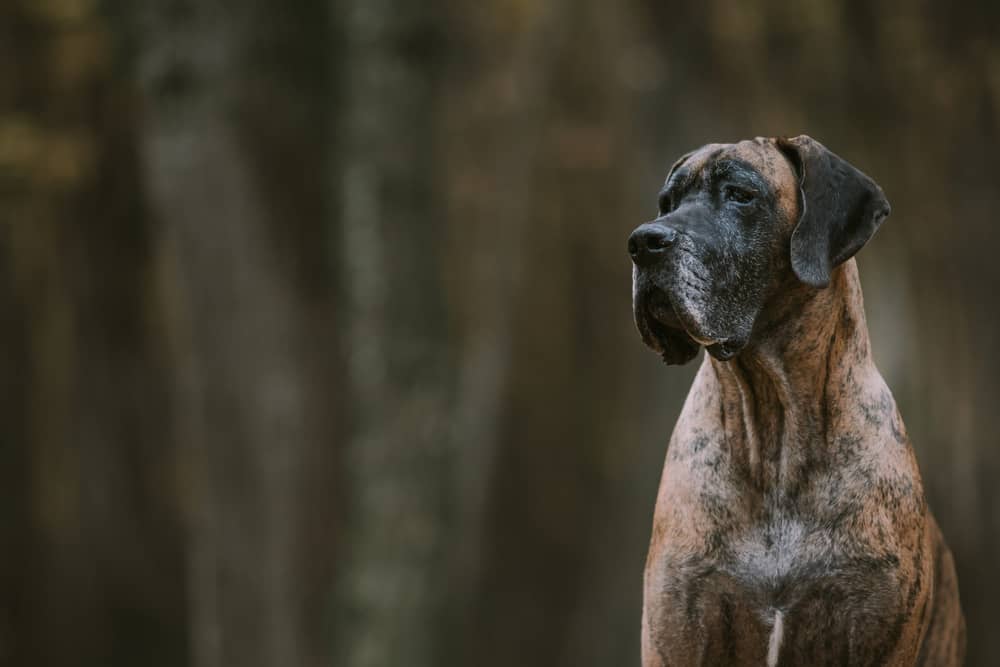
How can you groom a Corgi and Great Dane mix?
Great Danes just need a short brushing once every week, but Corgis’ double coats need special care.
here’s a table outlining grooming considerations for a Corgi Great Dane mix, often referred to as a Dorgi, in British English:
Grooming a Corgi and Great Dane mix
| Grooming Aspect | Description |
|---|---|
| Coat Length | Short to medium-length double coat |
| Shedding | Moderate shedding, more during seasonal changes |
| Brushing | Regular brushing (2-3 times a week) to remove loose hair, prevent matting, and distribute natural oils |
| Bathing | Occasional bathing as needed, typically every 6-8 weeks or when the dog gets dirty |
| Coat Maintenance | Check for mats or tangles, especially around the ears, neck, and tail, and address them promptly to prevent discomfort |
| Nail Trimming | Regular nail trimming (every 2-4 weeks) to keep them at a comfortable length, avoiding overgrowth |
| Ear Cleaning | Weekly ear checks and cleaning with a dog-specific ear cleaner to prevent wax buildup and infections |
| Dental Care | Regular brushing (3-4 times a week) to maintain dental health; provide dental chews or toys to reduce tartar buildup |
| Anal Gland Care | Monitor for signs of anal gland issues (scooting or excessive licking) and consult a vet if problems arise |
| Eyes | Regularly check for any discharge or tear staining; wipe gently with a damp cloth if necessary |
| Tail | Ensure the tail area is clean and dry, especially if it has a slight curl like a Corgi’s tail |
| Skin Care | Keep an eye out for any skin issues, such as dryness or irritation, and consult a vet if needed |
| Professional Grooming | Consider professional grooming for specific needs or if you prefer to have a groomer manage the coat and nails |
| Seasonal Shedding | Be prepared for increased shedding during seasonal changes, and adjust grooming routine accordingly |
| Flea and Tick Prevention | Use appropriate preventive measures to protect against parasites, as recommended by your vet |
Remember that the specific grooming needs of a Dorgi may vary based on individual factors, including coat length, texture, and activity level.
Regular grooming not only keeps your Dorgi looking their best but also contributes to their overall health and comfort.
Normal maintenance calls for brushing a Great Dane’s coat just once per week, and twice daily during shedding.
If your puppy has a double coat, like the Corgi, it will shed very frequently throughout the year.
It will need to be cleaned and combed every day using a slicker brush to get rid of all the undercoat that regularly sheds.
Your Dorgi usually only requires a bath when he is filthy or after getting into something nasty.
Also Read: What is an Australian Labradoodle – The Ultimate Guide
TUG XL 360° Tangle-Free Retractable Dog Leash with Anti-Slip Handle | 26 ft Strong Nylon Tape | One-Handed Brake, Pause, Lock
Are Corgi Great Dane Mix hypoallergenic?
No, neither parent is considered hypoallergenic, thus neither is the corgi great dane.
Although Great Dane Corgi Mix is a moderately low shedder and is unlikely to leave pools of saliva all over the place, there is still a high likelihood that various allergies will be brought into your home.
A Corgi Great Dane Mix, often called a Dorgi, is not a hypoallergenic breed.
These dogs typically have a double-layered coat with moderate shedding.
Hypoallergenic breeds are those that produce fewer allergenic proteins in their saliva, skin, and urine, and they tend to shed less dander into the environment.
Dorgis, on the other hand, are not considered hypoallergenic.
Here’s a table summarizing their hypoallergenic status:
Corgi Great Dane Mix hypoallergenic Table
| Hypoallergenic Status | Corgi Great Dane Mix (Dorgi) |
|---|---|
| Hypoallergenic | No |
| Coat Type | Double-layered coat with moderate shedding |
| Allergenic Proteins | Tends to produce typical allergenic proteins found in dog saliva, skin, and urine |
| Shedding | Moderate shedding, especially during seasonal changes |
| Dander Production | Moderate dander production, which can trigger allergies in sensitive individuals |
| Allergy Considerations | Not recommended for individuals with severe dog allergies, although reactions can vary |
| Allergy Management | Regular grooming, cleaning, and maintaining a clean living environment can help reduce allergen exposure |
If you have relatively minor allergies but have been found to have a corgi great dane, you can try to prevent allergic reactions by routinely brushing your corgi great dane to concentrate allergens in one place and then properly washing your hands and arms afterwards.
Dander particles can also be kept out of the air by using an air filter. Cleaning and sanitizing hard surfaces will help minimize exposure to dog saliva allergies.
Great Dane Corgi Mix are a breed of intelligent canine. They simply care about your happiness! This is a key component of trainability.
summarizing training considerations for a Corgi Great Dane Mix, often referred to as a Dorgi, in British English:
Train a Corgi and Great Dane mix
| Training Aspect | Description |
|---|---|
| Training Type | Positive reinforcement training is highly effective for Dorgis. Use treats, praise, and rewards to motivate and reinforce desired behaviours. Avoid harsh or punitive methods. |
| Socialization | Begin socialization early to expose the Dorgi to various people, animals, and environments to promote a well-adjusted and confident adult dog. |
| Basic Commands | Teach essential commands like “sit,” “stay,” “come,” “down,” and “leave it” for safety and control. |
| Leash Training | Train on a leash to prevent pulling and ensure good leash manners. |
| House Training | Implement a consistent house-training routine, including regular outdoor breaks, to establish proper bathroom habits. |
| Crate Training | Use crate training to provide a safe and comfortable space, especially for housebreaking and when you’re not home. |
| Obedience Training | Enroll in obedience classes or work with a professional trainer to develop advanced skills and manners. |
| Recall Training | Train a reliable recall (coming when called) using positive reinforcement to keep your Dorgi safe off-leash. |
| Behavioural Issues | Address behavioural issues such as barking, chewing, or digging with positive reinforcement and redirection techniques. |
| Mental Stimulation | Provide mental stimulation through interactive toys, puzzles, and games to prevent boredom and destructive behaviour. |
| Exercise Needs | Ensure regular exercise to keep your Dorgi physically and mentally active, as both parent breeds have varying energy levels. |
| Patience and Consistency | Be patient and consistent in your training efforts, as Dorgis can sometimes be independent thinkers. |
| Social Interactions | Encourage positive interactions with other dogs and people to promote good behaviour in various situations. |
| Positive Reinforcement | Always reward good behaviour promptly to reinforce positive actions and create a positive training experience. |
| Adapt to Individual Needs | Tailor your training approach to your Dorgi’s unique personality and temperament. Some may be more stubborn or sensitive than others. |
| Training Sessions | Keep training sessions short, engaging, and enjoyable to maintain your Dorgi’s interest and focus. |
How to train a Corgi and Great Dane mix?
Some dogs are obstinate and only want their basic requirements to be satisfied, such as being fed and walked.
Sometimes, developing a relationship takes years. Here, that is not the case.
Arm & Hammer Fruit Twisters Fresh Breath Dental Treats for Dogs in Fruity Strawberry Flavor Baking Soda Dog Treats for Dental Health
Both Corgis and Great Danes are good at following their owners’ cues because of their working backgrounds. They pick up on what you want from them immediately and do it proudly.
They work in the customer service industry.
Though they do appreciate their treats, keep in mind that affection is the best reward for this breed!
Despite being an active breed, they can still gain weight. Corgis are renowned for being extremely trainable.
They frequently compete in dog agility competitions to showcase their tracking, herding, tracking, and showmanship skills.
Due to their size, Great Danes are less nimble. Think of King Kong attempting to swing from the monkey bars. However, they are very trainable, especially if you start them young.
The Great Dane Corgi Mix intelligence is a known fact, regardless of whether they have dominant or recessive genes. This makes this breed very appealing.
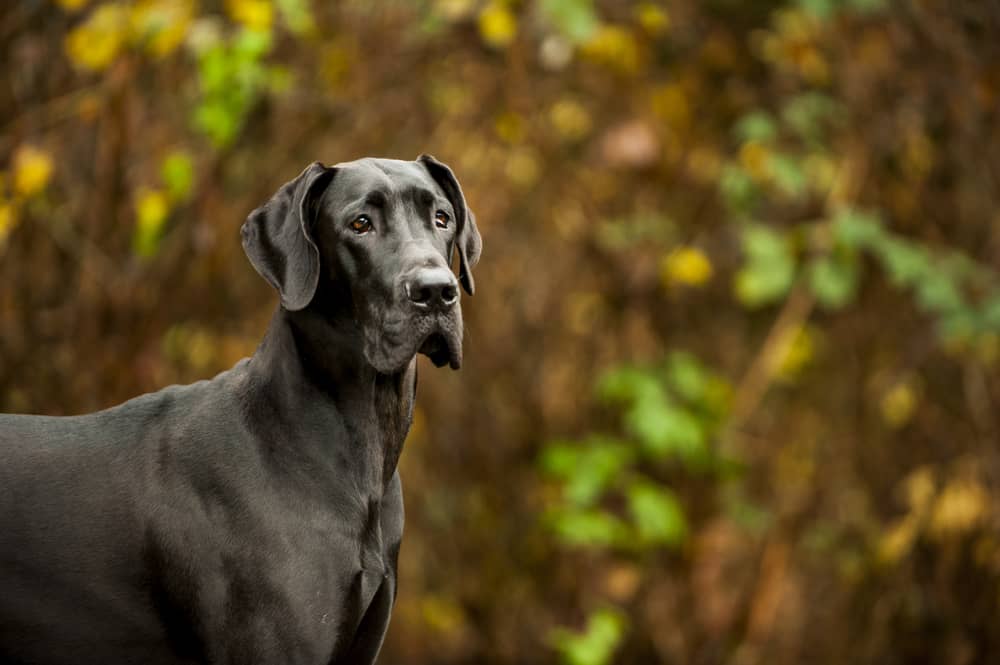
Corgi and Great Danes mix lifespan and common diseases.
The exact lifespan and health risks of a corgi great dane mix hybrid are impossible to determine.
The Corgi mix’s parent breeds have an impact on both its longevity and health problems.
Thus, it is challenging to estimate precisely a long lifespan.
summarizing some common diseases and health conditions that can affect dogs in British English:
Dorgi mix common diseases
| Disease/Condition | Description |
|---|---|
| Arthritis | Inflammation of the joints, leading to pain and reduced mobility. Common in older dogs and larger breeds. |
| Hip Dysplasia | A genetic condition where the hip joint doesn’t develop properly, causing pain, lameness, and arthritis. |
| Bloat (Gastric Torsion) | A life-threatening condition where the stomach twists, trapping gas and causing severe pain and potential organ damage. |
| Heartworm Disease | A parasitic infection transmitted by mosquitoes, affecting the heart and lungs if left untreated. |
| Obesity | Excess body weight due to overeating and lack of exercise, leading to various health issues. |
| Diabetes | A metabolic disorder where the body cannot regulate blood sugar levels, requiring insulin treatment. |
| Cancer | The development of abnormal cells that can spread to other parts of the body; various types of cancer can affect dogs. |
| Dental Disease | Dental problems like gum disease, tooth decay, and tartar buildup that can lead to pain and infection. |
| Parvovirus (Parvo) | A highly contagious viral infection causing severe gastrointestinal symptoms and potentially fatal dehydration. |
| Rabies | A viral disease that affects the nervous system and is almost always fatal if not treated before symptoms appear. |
| Kennel Cough | An infectious respiratory disease with symptoms like coughing, sneezing, and nasal discharge. |
| Lyme Disease | A tick-borne illness that can cause joint pain, fever, and other symptoms; prevention through tick control is essential. |
| Fleas and Ticks | Parasitic infestations that can lead to skin irritation, allergies, and the transmission of diseases. |
| Allergies | Dogs can have food allergies, skin allergies, or environmental allergies, leading to itching, rashes, and discomfort. |
| Ear Infections | Bacterial or yeast infections in the ears, causing pain, itching, and head shaking. |
| Eye Conditions | Various eye issues, such as cataracts, glaucoma, and progressive retinal atrophy, can affect a dog’s vision. |
| Pancreatitis | Inflammation of the pancreas, often triggered by dietary indiscretions, causing vomiting, diarrhea, and abdominal pain. |
| Kennel Stress | Dogs can experience stress-related symptoms when in unfamiliar environments like kennels. |
| Heat Stroke | Overheating in hot weather can lead to heatstroke, a life-threatening condition requiring immediate attention. |
| Obstructive Airway Syndrome (Brachycephalic Breeds) | Breathing difficulties in breeds with flattened faces, like Bulldogs and Pugs. |
| Degenerative Myelopathy | A progressive spinal cord disease that can cause paralysis in older dogs. |
| Thyroid Disorders | Problems with the thyroid gland can affect metabolism and energy levels. |
| Kidney Disease | Kidney problems can lead to issues with waste elimination and electrolyte balance. |
| Liver Disease | Liver disorders can affect digestion and metabolism. |
| Epilepsy | A neurological condition causing seizures, often controlled with medication. |
Please note that not all dogs will experience these conditions, and preventive care, a balanced diet, regular exercise, and routine veterinary check-ups can help maintain a dog’s health and potentially reduce the risk of these diseases.
The lifespan of corgi-dane mix breeds can be predicted by a few different variables. A Corgi mix can live for 12 to 15 years on average.
Due to less care and treatment, some Corgi mixes can survive up to 6–8 years. Additionally, some Corgi mixes have a 10-year lifespan.
Heart disease, bloat, hip dysplasia, and cancer are the most prevalent medical conditions affecting Corgi Danes.
Also Read: 19 The Slowest Dog in the World
● Heart diseases
Mixed-breed corgis are prone to several heart diseases. Common issues include enlarged hearts, weakening organs, and impaired functionality.
Additionally, coughing, sluggishness, and difficulty breathing are common symptoms. These illnesses may be passed down from parent breeds to corgi mixes.
● Bloat
Great Dane Corgi Mix dogs who experience bloating are in grave danger of dying. It also goes by the name GDV and results from a significant gastrointestinal condition. It stops the stomach and other organs blood flow.
GDV is frequently characterized by severe discomfort, vomiting, and breathing difficulties. Call a vet right away if you think your dog may be experiencing any of these signs.
● Dysplastic hips
Hip joint loosening is referred to as hip dysplasia. It might happen while a Corgi mix dog is growing. Hip dysplasia may develop as a dog reaches maturity.
A dog with hip dysplasia can get arthritis, muscular atrophy, and reduced movement.
● Cancer
Skin, bone, and lymphomas can all occur in corgi Great Dane mix. The dog could’ve regularly shown this cancer.
Additionally, loss of appetite, a terrible smell, strange lumps, and weight loss are all typical cancer signs.
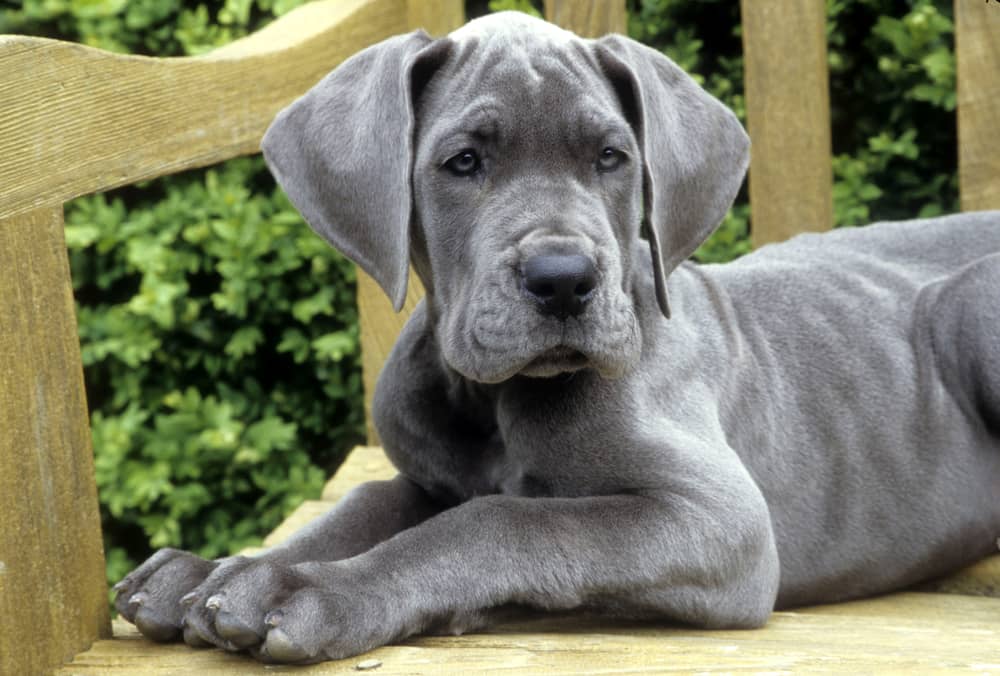
Conclusion
To sum up, the Corgi Great Dane mix, often known as the Corgi-Dane, has a special mix of characteristics and appeal that has made it a popular choice for dog lovers.
This crossbreed has won people over with its lovely looks, fun attitude, and flexibility.
The Corgi-Dane is a charming cross that offers the best of both worlds to your home, whether you are drawn to the Corgi’s lively attitude or the Great Dane’s calm temperament.
